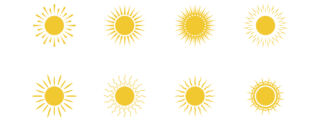
Targeting Key Consumer Types
The Ernst & Young (EY) Future Consumer Index addresses how five types of consumers are evolving around the globe and details emerging priorities that will shape future patterns of consumption. The 11th edition of this EY report has determined that, “While affordability has always been paramount for many, priorities over health have given way to pent-up demand for experiences, and the proportion of consumers prioritizing the needs of the planet has risen.”
Tip: “While affordability has always been paramount for many, priorities over health have given way to pent-up demand for experiences.”
FIVE GROUPS
To help better meet the needs of your own customers and patients, here’s a closer look at EY’s five consumer groups and some trends within each. Those groups and their top priorities are:
• The Affordability First Consumer: Embracing frugality as a way of life.
• The Health First Consumer: Focusing on their personal well-being.
• The Experience First Consumer: Living life for today, not tomorrow.
• The Planet First Consumer: Making sustainable choices for a better future.
• The Society First Consumer: Making choices that benefit their community.
Affordability First
This consumer focuses on price and cost. Nearly 4 out of 10 (38%) expect that over the next three years, their life will be better, while 32% expect it will be worse. They focus the essentials, and 67% don’t feel a need to keep up with the latest fashions.
What about shopping habits? According to EY, “They are conservative rather than disruptive. Many prefer to shop in-store. They have a higher distrust of data sharing, and most are unwilling to share their personal data, even if it means getting cheaper products.”
of “planet first” consumers will pay more for sustainably produced products.
Health First
This consumer thinks, “I will choose brands and products that I trust to be safe. I will cut discretionary spending.” Most (63%) are concerned about rising costs. They’re afraid that cost pressures will last and are limiting their nonessential spending. Overall, they’re moderately pessimistic about their country’s economic outlook.
Experience First
According to EY, this consumer says, “I will live for the moment and look for experiences that help me get the most out of life. I am financially and socially optimistic. When it comes to what I buy, I will enjoy trying new things. I will also look for products and services that feel like they are made just for me and what I need. The brands I buy will tell people a lot about who I am.” They’re also comfortable with digital and buying online.
Planet First
It’s all about sustainability. If they cut spending, it’s based on this alone, as they tend to be better off financially than some groups. Nearly half (48%) will pay more for sustainably produced products. Their commitment to sustainability isn’t always reflected in their purchasing habits, however, as “many still want to keep up with the latest fashion or tech trends. They are also more likely than average to buy products not because they need them but because they make them feel happy,” reports EY.
Society First
Less concerned about any rise in cost of living than other groups, 41% are nonetheless reducing costs by choosing less expensive brands, and 42% are focusing more on the essentials. According to EY, “Their defining concern is the health of society, but they appreciate that a healthy society needs a healthy planet. So, they are highly interested in ethically produced goods.” The vast majority (70%) are comfortable paying more for sustainable products.
Also more likely to purchase based on the ethical behavior of vendors, “two-thirds also think they need more information to help them make more sustainable choices” and have to problem reaching out to companies to get this information. Want to do more business with them? Then get involved in “causes.”
How do you manage different types of consumers like the ones detailed here? Tell us about it and share in the conversation on Facebook here.
Comments are closed.









